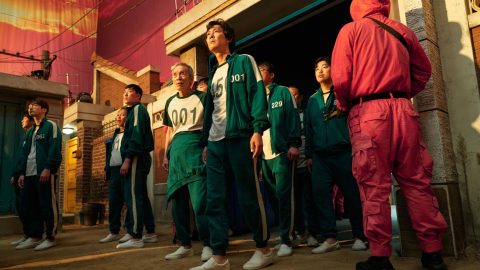NME | Music, Film, TV, Gaming & Pop Culture News

Sometimes, when I can’t sleep, I find myself sat up in bed, Google open on my phone, searching for answers to the questions that seem to only plague me in the wee hours of the morning.
Often these questions will concern the supernatural: are ghosts real? Does Bigfoot exist? That sort of thing. Sometimes they will involve locating the whereabouts of a beloved footballer from my childhood – what happened to former Doncaster Rovers full-back Steve Prindiville? Turns out he signed for Stafford Rangers and retired in 2001. But most often – and this is something I’ve been looking for the answer to for thirty long years – I will type the following words into the Google search bar:
- READ MORE: ‘Skyward Sword’ isn’t the Zelda remaster everyone wanted, but who cares when we have ‘Mario Golf’
“Why is Blanka from Street Fighter II green?”
I’m not alone in wanting to know the answer to this. Type ‘Why is Blanka…’ into said search engine, and the first question that the algorithm will reveal is – you guessed it – ‘Why is Blanka green?’
Is anyone searching for an answer to why Blanka can emit electricity? Or why he bites other Street Fighter combatants in the face? Nope. That’s perfectly normal it seems. But him having green skin? Yeah. Everyone, it turns out, is asking the same question.
The reason for my confusion is this: in Capcom’s 1991 mega hit Street Fighter II – a game celebrating its 30thanniversary this month – Blanka is Brazilian. Now, I’ve been to Brazil – I went there ten years ago, to interview Gogol Bordello, for NME – and I didn’t see anyone, not a single person, who had green skin.
Of course, Brazil is an enormous country – 8.5million square kilometres, with an estimated population of 211million people – and I can’t claim to have visited every patch of it or met everyone who hails from there. But I spent a significant amount of time in the populous cities São Paulo and in Rio de Janeiro, and no one was green.
There’s been so much Street Fighter media within the last three decades that there isn’t a whole lot of consistency to be found in establishing the details of Blanka’s story. That said, the tentpoles of how he came to be are roughly the same.
Here’s what we know: he was born ‘Jimmy’ and lived a perfectly regular human existence, until a plane he was traveling on as a child crashed in the Amazon rainforest. Then it gets really weird. His electric abilities stem from coming into contact with electric eels. His green skin from eating too many plants, and thereby consuming too much chlorophyll.
The major deviation from this backstory comes in the character’s appearance in 1994’s universally derided Street Fighter movie. Played by Home And Away’s Robert Mammone, the Blanka in Steve E. de Souza’s film is a curious bastardisation of the Blanka we know and a character from the games’ wider universe, Charlie.

The film version of Blanka comes to be after Charlie is taken captive by Bison – played by the great Raul Julia in his last ever role – who then forces Dhalsim to subject him to a raft of genetic mutations, in a bid to create the perfect soldier.
Reading accounts of the Street Fighter movie are far more entertaining than watching it – the insistence of Capcom to cast the very Belgian Jean-Claude Van Damme as the very American Guile should be chronicled in the dictionary within the entry for ‘Hollywood folly’ – but I’m still yet to learn why the film Blanka looks like he was dressed on a budget of 50p, from the Hallowe’en aisle in Asda.
I was obsessed with Street Fighter 2 as a kid. I lived in my local arcade, pumping whatever pocket money I had into the machine until my pockets stopped jangling and I was forced to return home, dejected, counting down the days until I could return once more.

It wasn’t until I was much older that I realised that there’s a lot about Street Fighter 2 that is hugely problematic. The Dhalsim character – from India, and a scientist of renown and great intellect – literally wears a chain of skulls around his neck, as if plucked from the catalogue of ‘Racist-savage-tropes-R-US’. Is it okay for the game’s Brazilian character to be an actual cannibal? Probably not. Still, it could have been worse. Game designer Yoshiki Okamoto has previously spoken of his original intention to make the life bar for Chun-Li shorter than the other characters, “because women aren’t as strong as men”.
I could probably cobble together an answer to the question, ‘Why is Blanka green?’ It wouldn’t make much sense, but it would be an answer that for many years I didn’t have. And yet still I search. I think in these moments I’m looking for the innocence I felt as that kid in the arcade, desperately trying (and failing) to pull off Zangief’s spinning piledriver, not yet aware of how complicated the world could be – or how damaging the portrayal of ethnicities was in this unquestionably great fighting game. I think I might be looking for a different answer.
And now, forgive me, I must go try to find out why Mario is friends with a talking mushroom. Sweet dreams.
The post Why is Blanka from ‘Street Fighter II’ green? 30 years later it’s still a mystery appeared first on NME | Music, Film, TV, Gaming & Pop Culture News.






